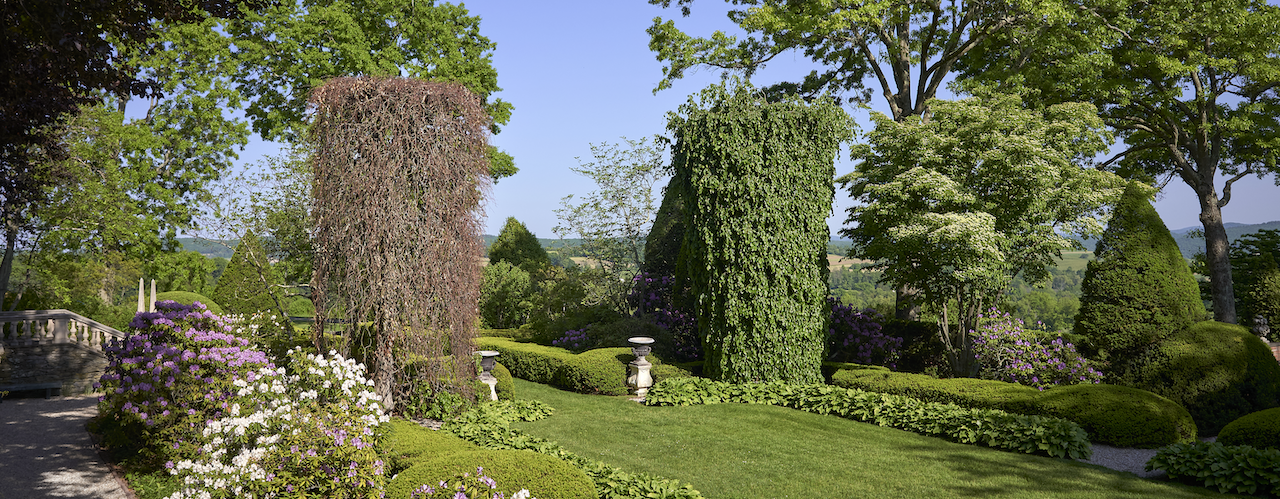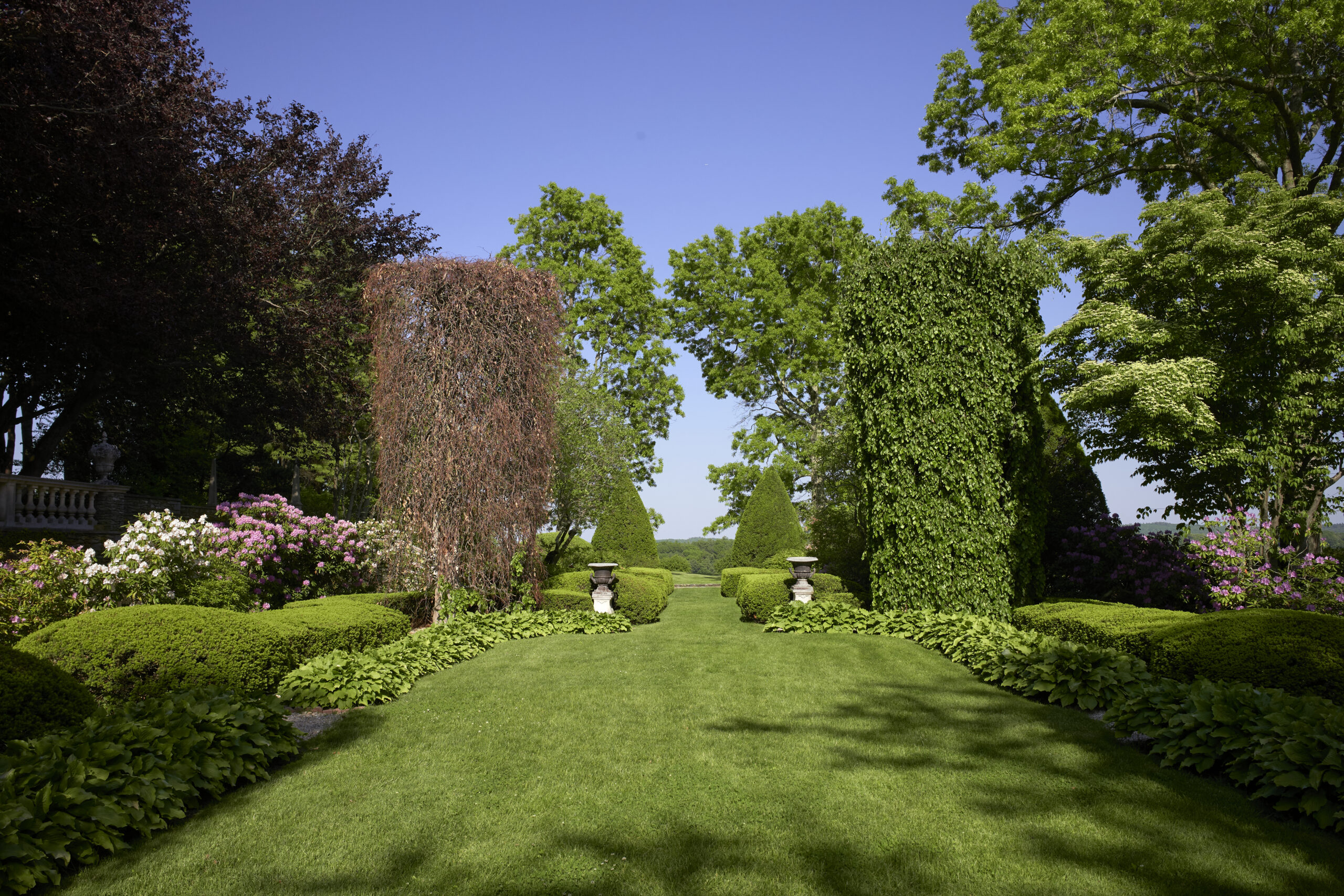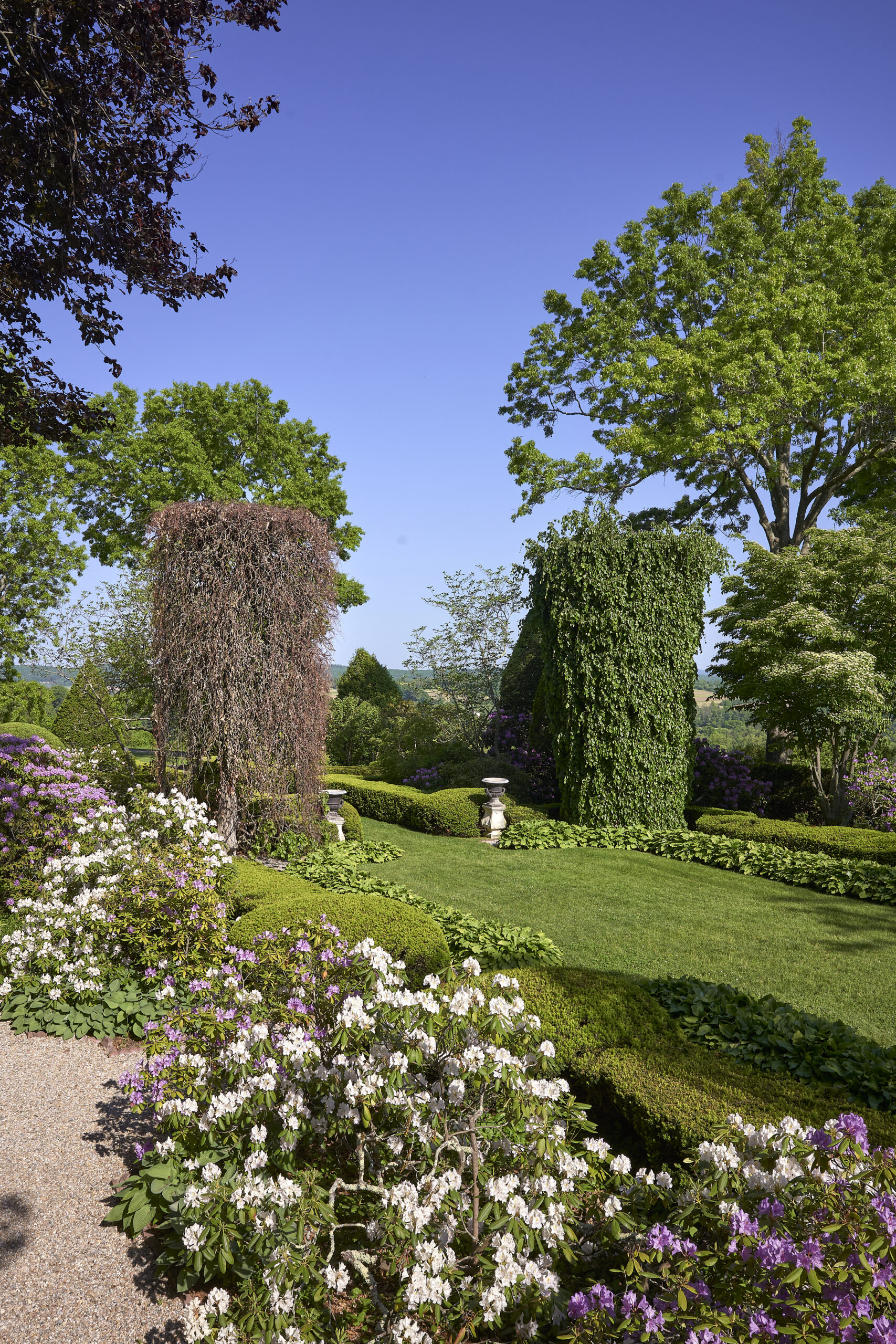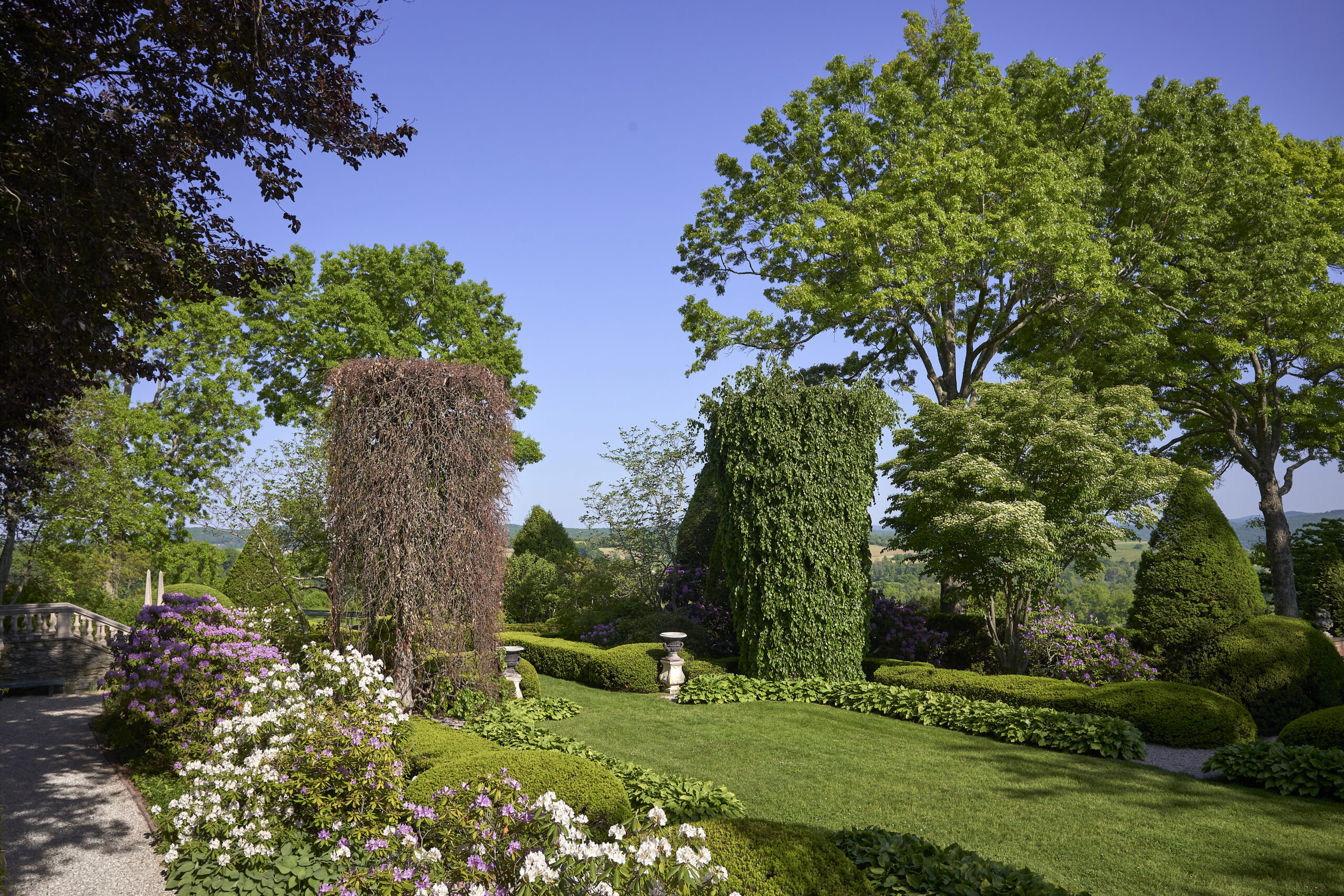
Welcome to Wethersfield 2023
Visitors to Wethersfield this summer will notice many of our beech trees are under threat by a host of pests, diseases, and fungi.
This spring we lost two of our four columnar weeping beeches in the East Garden. “They’re the only ones that I know of in the world,” Toshi Yano said, in reference to the structure of the trees expertly trained into columns. Yano, the former Director of Horticulture at Wethersfield, is now Managing Director of Earth Equity for the PRFCT Earth Project. He remains a consultant at Wethersfield.
Beech trees face an increasing number of threats. These include the ambrosia beetle, the pest responsible for the destruction of our weeping columnar beech trees. The ambrosia beetle attacked and killed the pleached beech tunnel. These pests burrow into the beech bark, leaving a fungus that suffocates the tree’s vascular system. It is possible other environmental factors, such as intermittent drought and excess standing water played a role as well.
Photo Credit: Adam Brandow
Other diseases appear on the horizon. Beech bark disease has been endemic in eastern North America for a century. Like many tree diseases, Beech bark disease is the result of an insect and a fungus. There are many ways to manage it, interrupting its course and mitigating the damage it causes. Beech leaf disease began to appear in the Northeastern United States only a few years ago. It is more lethal than Beech bark disease. And it spreads quickly. Tree scientists believe it is caused by a nematode called Litylenchus crenatae mccannii. Even if the affected tree doesn’t succumb to the disease, it may be weakened to a point where another opportunistic parasite or pathogen can gain a deadly advantage.
The decision to leave these weeping beech trees standing is intentional. Here’s what we hope to accomplish in by keeping them standing:
To Learn. Removing these dead trees would deprive guests of the opportunity to experience first-hand the true impact of threats to biodiversity in the American landscape.
To Plan. Removing the dead trees simply because their death coincides with the opening of the summer season, would be to give in to an artificial deadline.
To Conserve & Innovate. As innovative horticulturalists, we consider the twin goals of landscape architecture as well as sustainability as we strive to integrate best practices of good land stewardship.
To Replace. As such, Wethersfield will replace the two dead Beeches with these factors in mind. While we have not yet selected replacements, they too will grow into glory aligning with the overall landscape architecture of Wethersfield Estate & Garden.
To Observe. We do expect that the remaining healthy Columnar Beech trees will eventually succumb. As such, we encourage visitors to spend time looking at these unique landscape architectural features.
Wethersfield’s founder, Chauncey Stillman, wanted to represent classical themes in this garden, so that walking through its rooms was to walk through the timeless story of Wildness into Order. Mr. Stillman was among the first to ban the use of pesticides and herbicides, right here at Wethersfield in the 1970’s. We remain committed to that ethos, doing all we can to avoid any chemically aggressive strategies. This means that we are always thinking about the health not just of a threatened plant or tree, but also of the larger system in which they live – the garden, the biome, the world.
Be assured that we will replace the weeping beeches. Our gardening team, led by Alaina Mancini, the Head of Horticulture, in consultation with experts in her field, will find a more fitting tree. Likely it will be a native variety, or a particularly resilient cultivar, the new tree will play a similar architectural role in the garden as the weeping beeches have for decades, while ensuring the best chance of a thriving garden in our shifting climate.
A similar devastation played out along the pleached beech tunnel in the Inner Garden last year. In that case, we paused to consider sustainable options. We removed the dead trees replacing them with American Hornbeam, a native species, more acclimated to the region. We look forward to the work of pleaching (braiding branches together to form a living lattice), as we work to make these remarkable “rooms” bloom for you. Join us as we conserve and evolve at the same time. Our goal as always is to keep Wethersfield stunningly beautiful, even as climate change and other factors continue to alter the American landscape.
Wethersfield History
Wethersfield Estate & Garden Founder Chauncey Stillman was a pioneer in conservation. In 1938, on the heels of the cataclysmic Dust Bowl, reforestation at Wethersfield began in cooperation with the New York State Conservation Department. By 1952, Wethersfield used nearly every conservation practice available in the Northeast. Owen Boyd, Wethersfield’s Farm Manager and Kansas Dust Bowl Native, conducted a tour of delegates attending the UN Scientific Conference on Conservation to demonstrate their effect. We invite you to watch this video for an important update on the impact of the Ambrosia Beetle on Wethersfield Beech Trees.
·Narrated by Marion de Vogel
·Written by Tara Shafer & Marion de Vogel
·Produced & Edited by Megan Davis
·Photography: Wethersfield Archives, Ngoc Minh Ngo, Pieter Estersohn, Toshi Yano & Alaina Mancin
Wethersfield History
Wethersfield Estate & Garden Founder Chauncey Stillman was a pioneer in conservation. In 1938, on the heels of the cataclysmic Dust Bowl, reforestation at Wethersfield began in cooperation with the New York State Conservation Department. By 1952, Wethersfield used nearly every conservation practice available in the Northeast. Owen Boyd, Wethersfield’s Farm Manager and Kansas Dust Bowl Native, conducted a tour of delegates attending the UN Scientific Conference on Conservation to demonstrate their effect. We invite you to watch this video for an important update on the impact of the Ambrosia Beetle on Wethersfield Beech Trees.
·Narrated by Marion de Vogel
·Written by Tara Shafer & Marion de Vogel
·Produced & Edited by Megan Davis
·Photography: Wethersfield Archives, Ngoc Minh Ngo, Pieter Estersohn, Toshi Yano & Alaina Mancin



